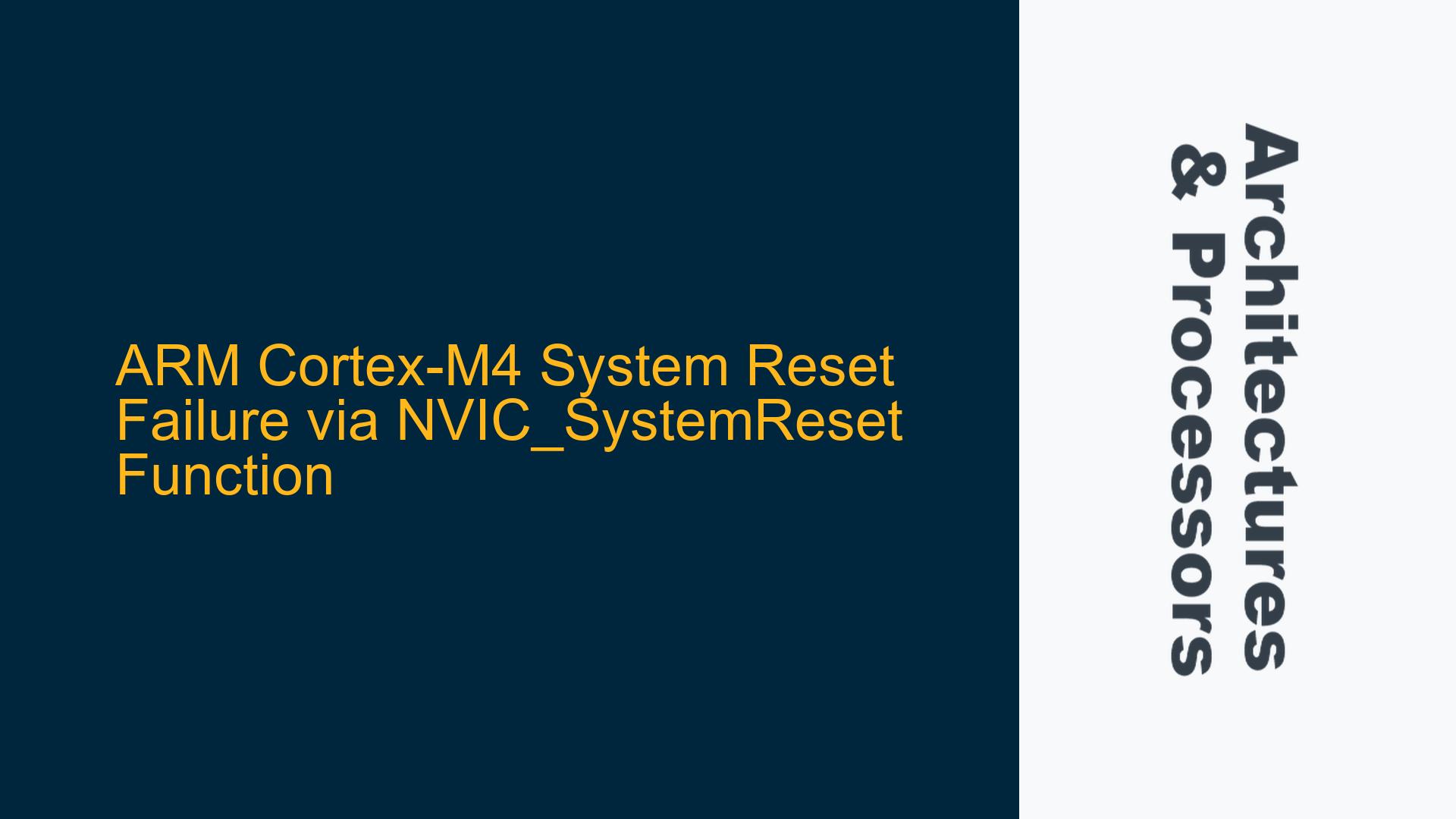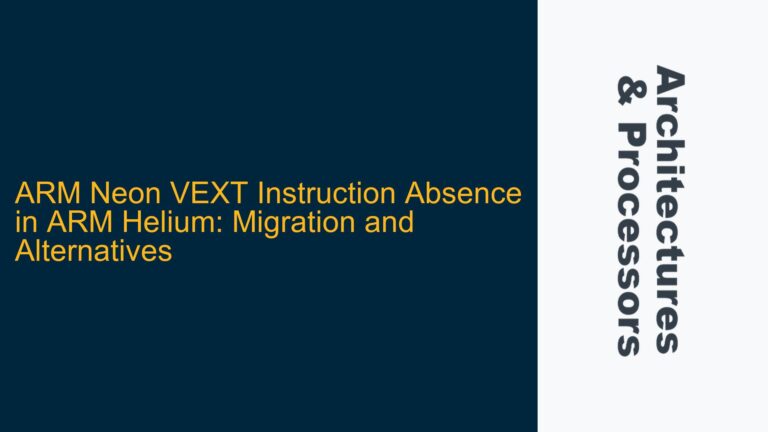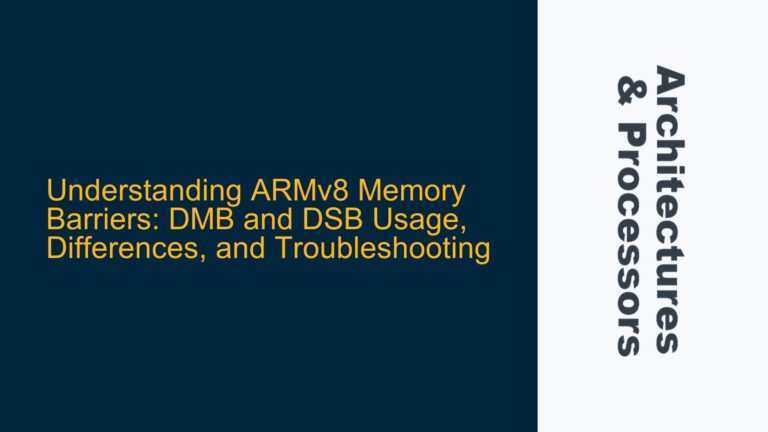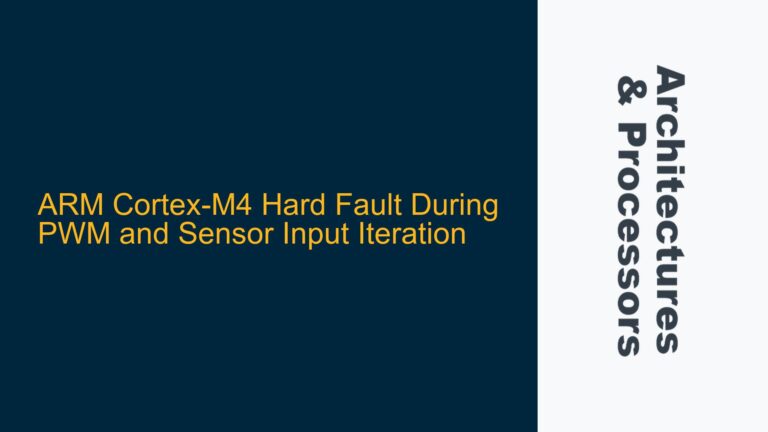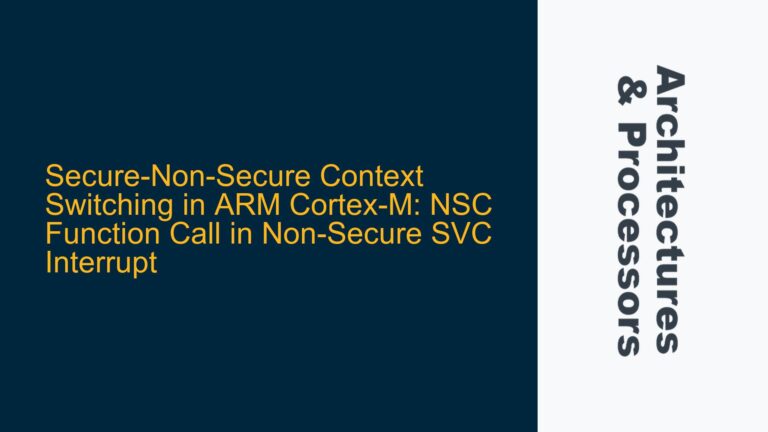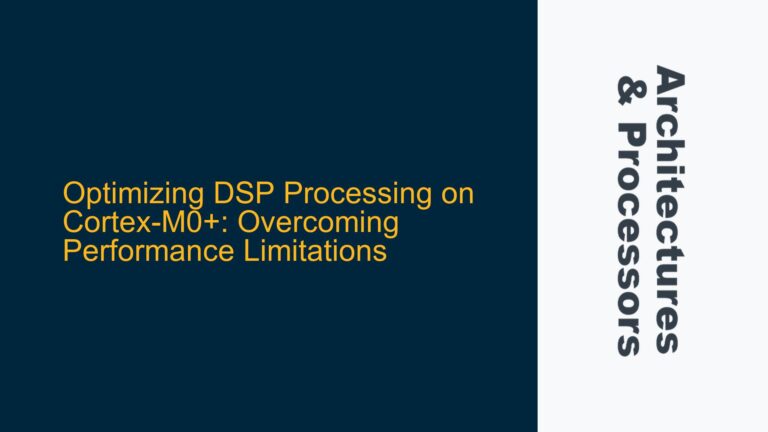ARM Cortex-M4 System Reset Failure via NVIC_SystemReset Function
The ARM Cortex-M4 microcontroller is designed to provide a reliable and efficient platform for embedded systems. One of its critical features is the ability to perform a system reset, which is often required during firmware updates, error recovery, or system reinitialization. However, in some cases, the NVIC_SystemReset function, which is intended to trigger a soft reset, may fail to restart the microcontroller as expected. This issue can manifest when the system only resets during a power-on reset or when manually triggered via a debugger, but not when the NVIC_SystemReset function is called during normal operation. This behavior indicates a potential misconfiguration or hardware-software interaction issue that needs to be addressed.
Misconfigured AIRCR Register and Debugger Interference
The Application Interrupt and Reset Control Register (AIRCR) in the System Control Block (SCB) is responsible for managing system resets and interrupt priority grouping. The NVIC_SystemReset function writes to this register to trigger a system reset. The AIRCR register requires a specific key value (0x5FA) to be written to the VECTKEY field to authorize any changes. Additionally, the SYSRESETREQ bit must be set to request a system reset. However, if the AIRCR register is not configured correctly, or if the debugger interferes with the reset process, the system may fail to reset as intended.
One common issue is that the debugger may alter the behavior of the system reset. When the debugger is attached, it may suppress the reset request or modify the AIRCR register in a way that prevents the reset from occurring. This is particularly evident when the debugger is used to manually write to the AIRCR register, and the written value rolls back to 0x5FA, indicating that the debugger is not allowing the SYSRESETREQ bit to be set. Additionally, the priority group field in the AIRCR register must be preserved during the reset request, as altering it can lead to unexpected behavior.
Another potential cause is the omission of memory barriers or incorrect timing of cache invalidation. The NVIC_SystemReset function includes Data Synchronization Barriers (DSBs) to ensure that all memory accesses are completed before the reset is triggered. However, if these barriers are not correctly implemented, or if the cache is not properly invalidated, the system may fail to reset. This is especially critical in systems with caches or write buffers, where pending memory transactions can delay the reset process.
Correcting AIRCR Configuration and Ensuring Proper Reset Sequence
To resolve the issue of the NVIC_SystemReset function failing to restart the ARM Cortex-M4 microcontroller, several steps must be taken to ensure that the AIRCR register is correctly configured and that the reset sequence is properly executed. The following troubleshooting steps and solutions provide a detailed approach to addressing this issue.
Step 1: Verify AIRCR Register Configuration
The first step is to verify that the AIRCR register is being configured correctly in the NVIC_SystemReset function. The function should write the key value (0x5FA) to the VECTKEY field, preserve the priority group field, and set the SYSRESETREQ bit. The following code snippet demonstrates the correct configuration:
__STATIC_INLINE void __NVIC_SystemReset(void)
{
__DSB(); // Ensure all outstanding memory accesses are completed
SCB->AIRCR = (uint32_t)((0x5FAUL << SCB_AIRCR_VECTKEY_Pos) |
(SCB->AIRCR & SCB_AIRCR_PRIGROUP_Msk) |
SCB_AIRCR_SYSRESETREQ_Msk;
__DSB(); // Ensure completion of memory access
for(;;) // Wait until reset
{
__NOP();
}
}
Ensure that the symbolic constants used in the code match the definitions in the microcontroller’s header files. Incorrect constants can lead to improper register configuration and prevent the reset from occurring.
Step 2: Disable Debugger Interference
To rule out debugger interference, test the NVIC_SystemReset function without the debugger attached. Run the code on the microcontroller in a standalone mode and observe whether the reset occurs as expected. If the reset works without the debugger, the issue is likely related to the debugger suppressing the reset request. In this case, consult the debugger’s documentation to determine if there are settings or configurations that allow the reset to proceed.
Step 3: Implement Proper Memory Barriers and Cache Management
Ensure that the Data Synchronization Barriers (DSBs) are correctly placed in the NVIC_SystemReset function. The DSBs ensure that all memory accesses, including buffered writes, are completed before the reset is triggered. Additionally, if the system uses caches, ensure that the cache is properly invalidated before the reset. This can be done using the __DSB and __ISB instructions to ensure that all cache operations are completed.
__STATIC_INLINE void __NVIC_SystemReset(void)
{
__DSB(); // Ensure all outstanding memory accesses are completed
SCB->AIRCR = (uint32_t)((0x5FAUL << SCB_AIRCR_VECTKEY_Pos) |
(SCB->AIRCR & SCB_AIRCR_PRIGROUP_Msk) |
SCB_AIRCR_SYSRESETREQ_Msk;
__DSB(); // Ensure completion of memory access
__ISB(); // Ensure instruction stream is synchronized
for(;;) // Wait until reset
{
__NOP();
}
}
Step 4: Check for External Reset Sources
In some cases, external reset sources, such as watchdog timers or external reset pins, may interfere with the soft reset process. Ensure that no external reset sources are active when the NVIC_SystemReset function is called. If a watchdog timer is enabled, ensure that it is properly configured and does not trigger a reset before the soft reset can complete.
Step 5: Validate Reset Behavior with Hardware
Finally, validate the reset behavior using hardware diagnostics. Use an oscilloscope or logic analyzer to monitor the reset pin of the microcontroller and verify that the reset signal is being asserted when the NVIC_SystemReset function is called. If the reset signal is not asserted, there may be an issue with the hardware or the reset circuitry. In this case, consult the microcontroller’s datasheet and hardware design guidelines to ensure that the reset circuitry is correctly implemented.
Conclusion
The failure of the NVIC_SystemReset function to restart the ARM Cortex-M4 microcontroller can be attributed to several factors, including misconfigured AIRCR registers, debugger interference, improper memory barriers, and external reset sources. By following the troubleshooting steps outlined above, you can identify and resolve the underlying issues, ensuring that the system reset functions as intended. Proper configuration of the AIRCR register, careful management of memory barriers, and validation of hardware behavior are critical to achieving a reliable system reset.
